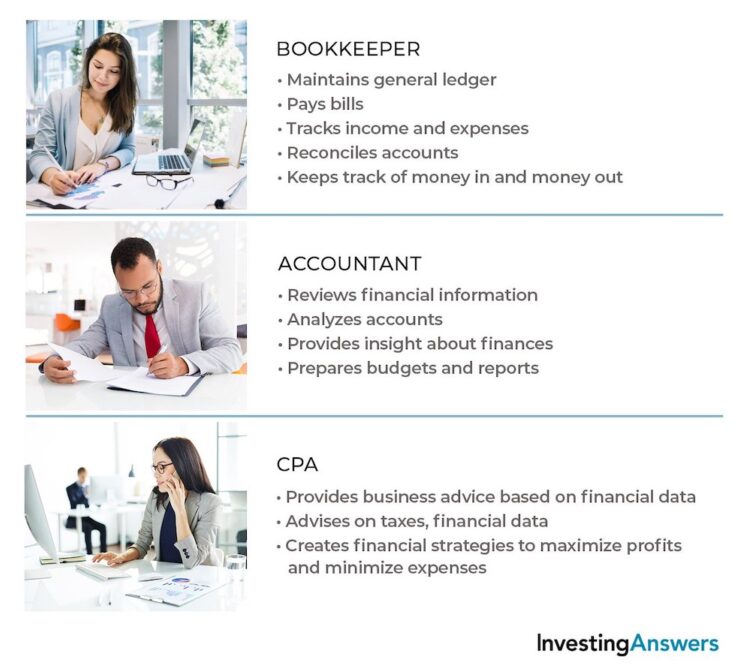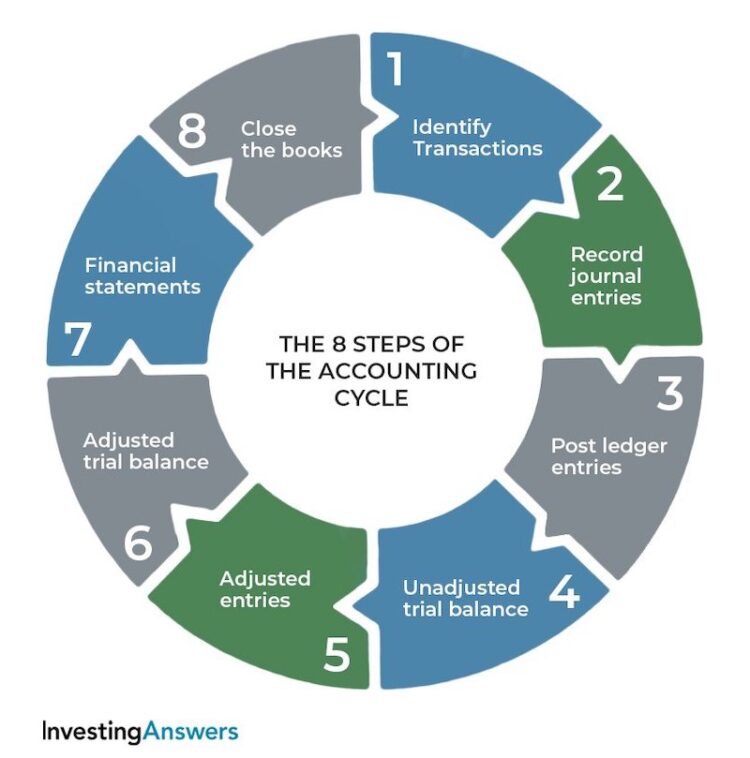What Is Accounting?
One can define accounting as the process of systematic recording, measuring, and communicating information about financial transactions. It’s a system that provides quantitative information about a business or a person’s financial position.
An even simpler definition of accounting is that it’s the process of tracking assets, liabilities, expenses, revenue, and equity.
Why Is Accounting Important?
Basic accounting knowledge is vital to understand investments, manage personal finances, and participate in the business world.
This information must be organized into the general ledger (“books”) of a company, which then provides the financial information used to report to tax authorities, investors, shareholders, regulatory agencies, and other possible stakeholders.
Although many believe that accounting relies solely on mathematical skills, it also calls for shrewd business knowledge, prudent judgment, and strong oral and written communication skills.
What Does an Accountant Do?
People who perform accounting functions may be called accountants, bookkeepers, or CPAs. The education, experience, and duties of each accounting role differ significantly. Although many believe that accounting relies solely on mathematical skills, this financial career also calls for shrewd business knowledge, prudent judgment, and strong oral and written communication skills.

Accountant
Accountants are responsible for preparing, analyzing, and interpreting the financial statements of companies and/or individuals.
Bookkeeper
Bookkeepers record transactions in a company’s general ledger, pay bills, issue invoices, and/or provide financial reports.
These financial professionals may earn a bachelor’s degree in accounting from an accredited college or university. Otherwise, they may complete a specialized course after high school to learn accounting basics.
Certified Public Accountants (CPAs)
CPAs serve as business advisors and they often provide advice on tax and financial matters. They may work with business owners or executives to create financial strategies or provide financial insight into business decisions affecting the company.
These professionals must have a bachelor’s degree in accounting and meet state licensing requirements. These requirements typically include additional education, significant accounting experience, and passing the CPA exam.
Note: All CPAs are accountants, but not all accountants are CPAs.
Who Uses Accounting?
Everyone uses accounting in some way. Individuals use accounting methods to maintain their personal budgets, reconcile their monthly credit card bills, and balance their checkbooks.
Every business – from a sole proprietor to a large multinational corporation – uses accounting methods to track revenues/expenses and analyze financial data. Although the size and scope of accounting departments may differ, all businesses must record transactions.
What Is Accounting Used for?
Accounting data is used for many purposes. These can include:
Communicating with Managers
Companies must communicate their financial position to managers through the use of accounting and financial data. Managers require detailed financial reports to estimate budgets and costs.
Paying Taxes
Accounting data is used to complete tax forms and schedules. It also helps to determine federal, state, and local taxes (payable or owed).
Applying for Loans
Lenders use accounting records to determine the creditworthiness of the applicant.
Satisfying Regulatory Bodies
Some companies are required to provide detailed reports to regulatory bodies regarding its financial position. Accounting data provides the basis of these reports.
Updating Shareholders
Shareholders require detailed financial information derived from accounting records to understand the fiscal health of a company and – by extension – the potential of its investments
Informing Capital Markets
Capital markets rely on accurate accounting and financial data, which in turn impacts stock prices.
How Many Types of Accounting Are There?
According to the University of Ohio, there are four types of accounting – with multiple specialties in each category.
For example, corporate accounting may be divided into for-profit and nonprofit accounting. Public accountants may provide auditing services or specialize in tax accounting. Government accounting may refer to employees of the IRS (who examine tax returns) or to local accounting departments who manage town, county, or state budgets.
Some may include these specialty areas as unique types of accounting while others include them in the four types listed below.
1. Corporate Accounting
Corporate accounting deals with the financial needs of corporations. For example, corporate accountants record and file important financial records (with federal and state authorities) to record and pay taxes. They may also prepare financial statements for internal and external stakeholders like managers, shareholders, and boards of directors.
2. Public Accounting
Public accounting refers to accountants who provide services directly to businesses and individuals. These professionals often consult with small business owners and help them manage their taxes and finances. They prepare financial statements, audit financial statements, and advise clients on matters pertaining to finance, accounting, and taxes.
3. Government Accounting
Government accounting refers to positions in the federal, state, or local governments who are responsible for financial reporting and auditing, taxation, and so on. Government accountants may examine tax reports and financial statements, prepare documents for the government or the general public, and assist with managing government funds.
4. Forensic Accounting
Forensic accounting is a branch of accounting that collects, recovers, and restores financial and accounting information as part of an investigation or court case. Such accountants may work with law enforcement officials to provide evidence and testimony on matters of financial fraud and abuse.
What Are the 5 Principles of Accounting?
The 5 basic accounting principles include revenue recognition, expense recognition, matching, cost basis, and objectivity. Each should be applied consistently and according to the accounting method chosen (e.g. accrual, cash basis).
The original principles of accounting were established by the Accounting Principles Board, now called the Financial Accounting Standards Board (FASB). FASB continues to provide updates and guidelines to accountants.
Example of Accounting Principles
Because most companies use accrual methods, the accounting principles described below focus on accrual accounting definitions.
1. Revenue
Revenue refers to the gross amount received from the sale of goods or rendering of services. Transactions are recognized when their service is rendered or the goods are sold (regardless of when the payment is received).
Example of Revenue in Accounting
A medical equipment manufacturer, Company ABC receives an order for equipment to be shipped to a hospital. The order is placed on May 1st and the equipment ships June 1st. Payment is received on August 1st. The medical equipment manufacturer records the revenue on May 1st (the date the sales contract is received/accrued), rather than when the payment is received on August 1st.
2. Expense
The expense principle in accrual accounting holds that expenses are recorded when they are incurred. For example, Company ABC pays a commission to its salesperson for the order. It records the commission expense on May 1, even though the salesperson doesn’t receive the actual payment until August 1.
3. Matching
The matching principle states that revenue and expenses must be recorded at the same time period in which they occur.
4. Cost
The cost principle states that assets must be recorded on the date they are acquired, and at the amount for which they were acquired (regardless of whether they change in value over time). For example, the hospital records the value of the purchased medical equipment at the precise value it paid for them on May 1, despite the fact that such equipment depreciates over time.
5. Objectivity
The fifth principle of accounting is the principle of objectivity, meaning that accounts are backed up by evidence (e.g. sales receipts, invoices, purchase orders). The medical equipment manufacturer follows the standard of objectivity by maintaining copies of sales orders while the hospital maintains objectivity by providing its accountant with receipts for the purchase.
What Are Accounting Liabilities?
Accounting liabilities are financial obligations owed by a company or an individual. Items often have the word ‘payable’ after them (e.g. income tax payable).
How Does the Accounting Cycle Work?
The accounting cycle is the process of recognizing and recording all of the financial transactions made by a business. It includes eight steps which are followed to identify, record, and reconcile entries.
The 8 Steps of the Accounting Cycle
The 8 accounting cycle steps are fairly constant and include:

1. Identify Transactions
Transactions related to the business are identified and cataloged according to type. For example, sales orders may be set aside to record as income, while office supply receipts may be set aside as expenses.
2. Record Journal Entries
Journal entries are recorded in the appropriate category.
3. Post Ledger Entries
The journal entries are added to the general ledger.
4. Unadjusted Trial Balance
An unadjusted trial balance compares debits against credits. Debits and credits must balance for the accounts to be correct. The unadjusted trial balance shows whether they are equal. If they aren’t, the mistake must be identified and corrected.
5. Adjusted Entries
Entries are adjusted to add any income or expenses that weren't captured during steps 1-4. For example, bank interest statements may not arrive until after the close of the accounting period. An adjusted entry can be made to include interest.
6. Adjusted Trial Balance
Before taking the time to create the financial statements in the next step, run an adjusted trial balance again to make sure there are no mistakes. If debts and credits aren't equal, the accountant will need to go back and review their entries to find mistakes.
7. Financial Statements
The correct balances can be used to create the income statement, balance sheet, and cash flow statement.
8. Close the Books
Revenues and expenses are closed, bank and credit card statements are reconciled, and accounts are set up for the following month.
Accounting Software and the 8 Accounting Steps
Your accounting software likely performs many of these steps automatically. Once income and expense items are identified and entered into the software, the system should update the accounts and general ledger. Users can run reports directly from the system. A quarterly or annual audit of the entire general ledger can reveal any accounts that are out of balance and must be corrected through adjusted entries.




